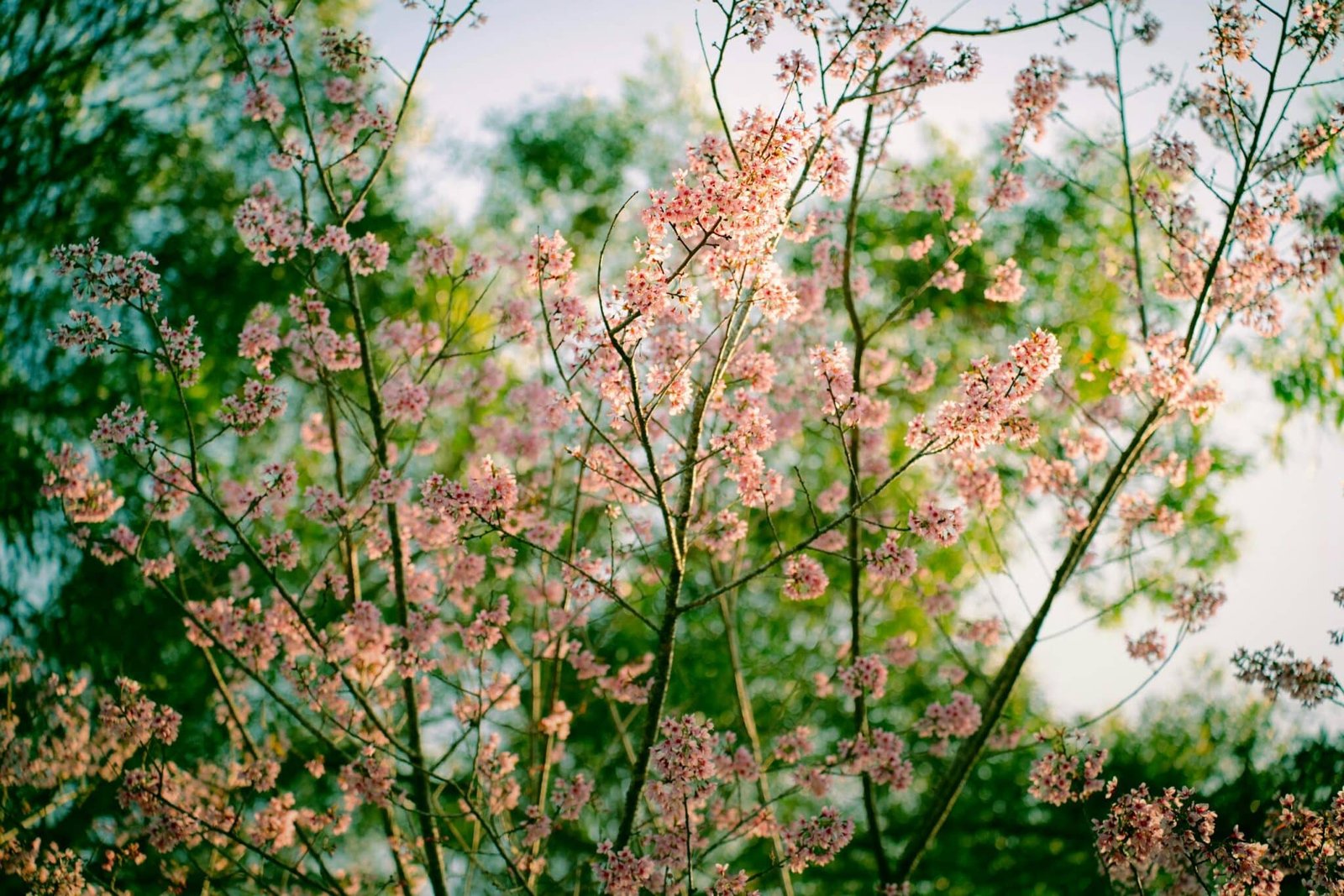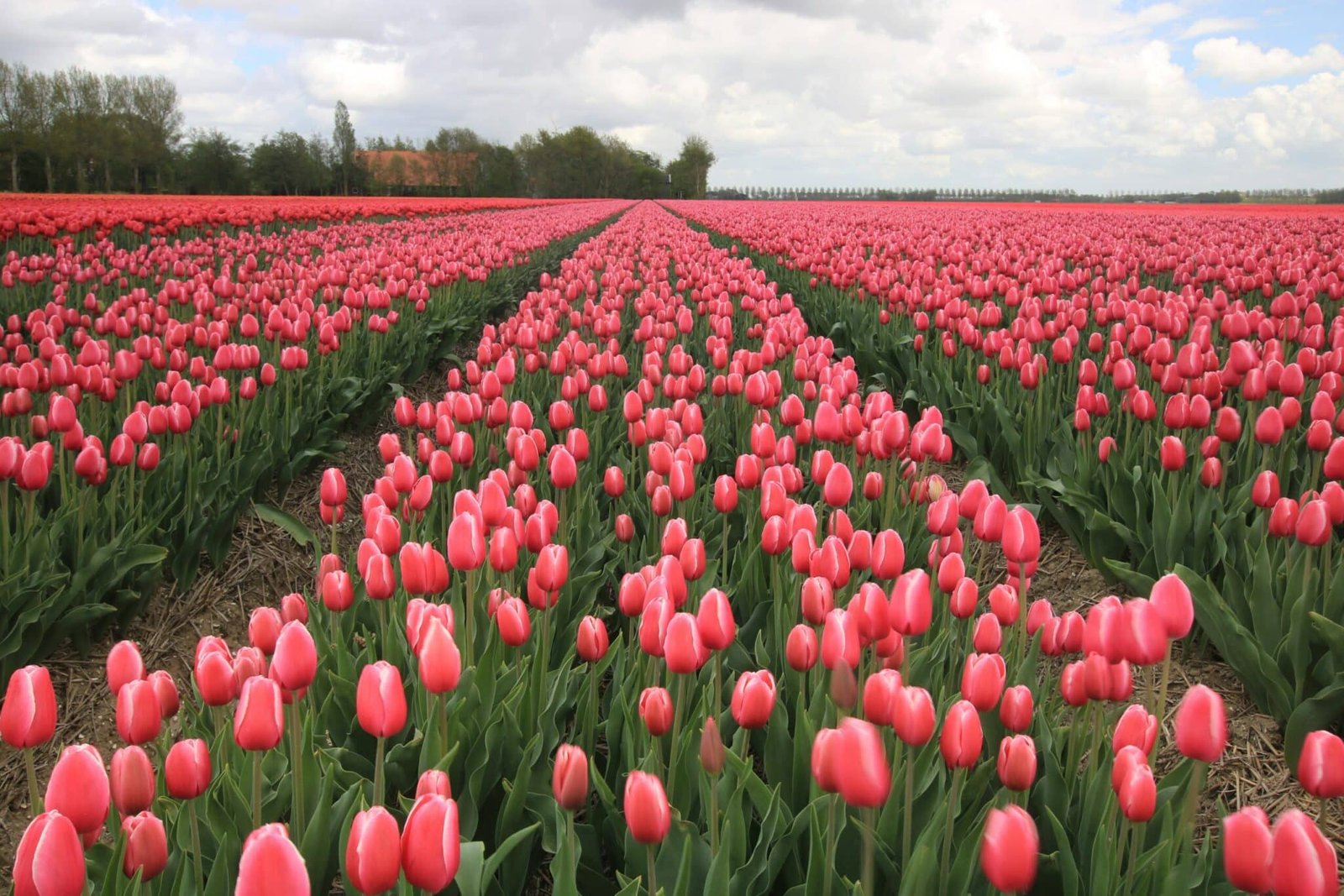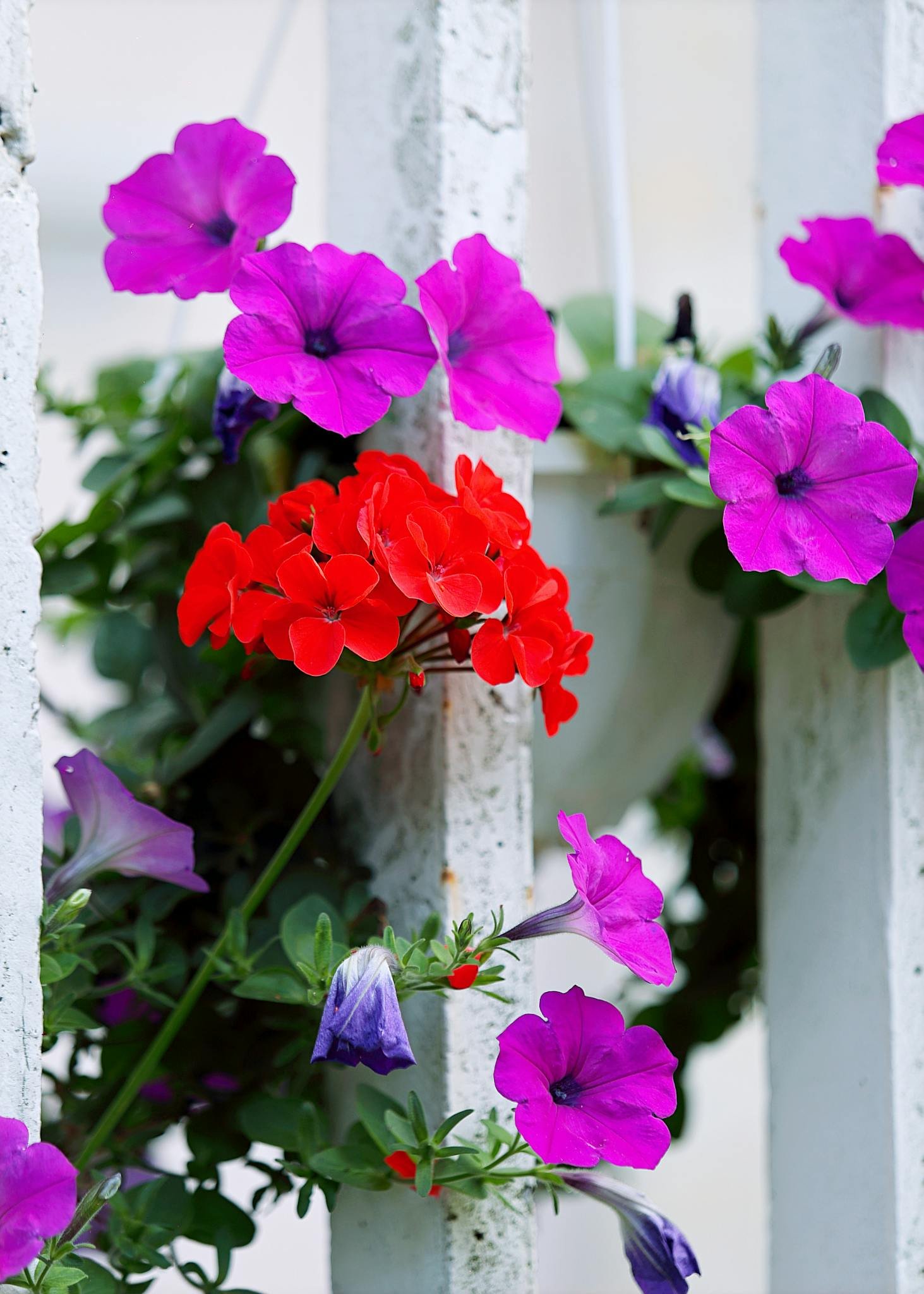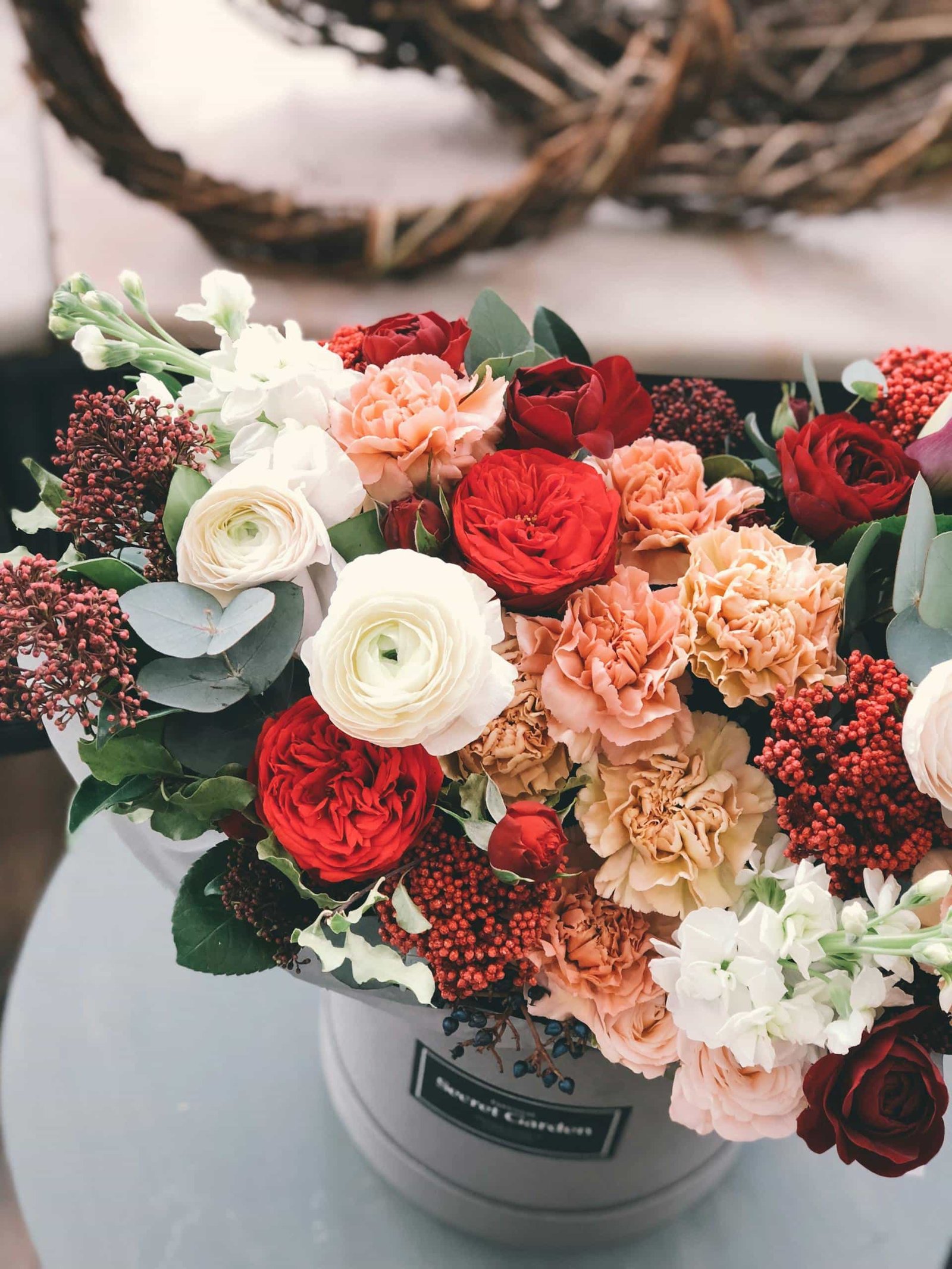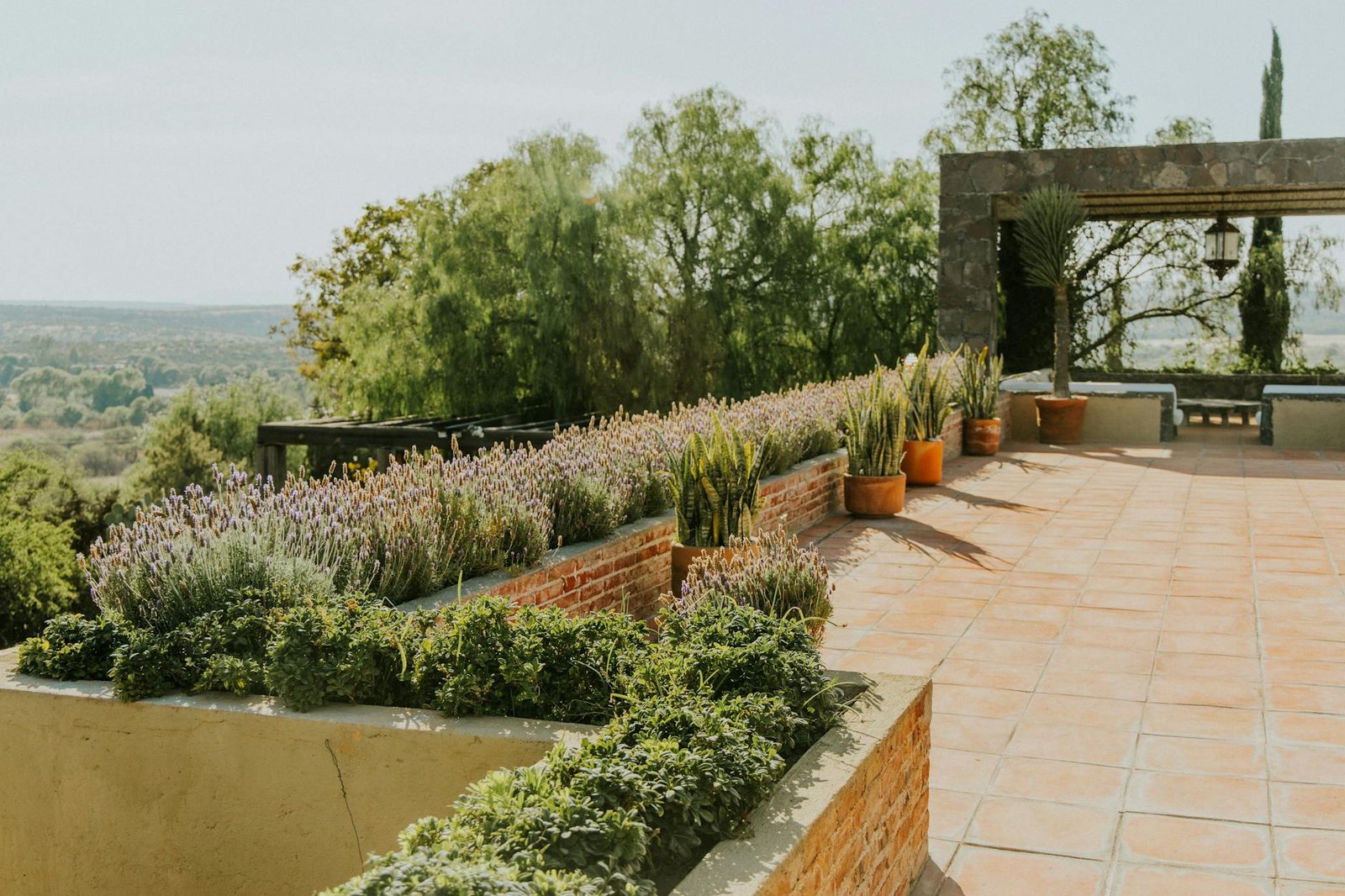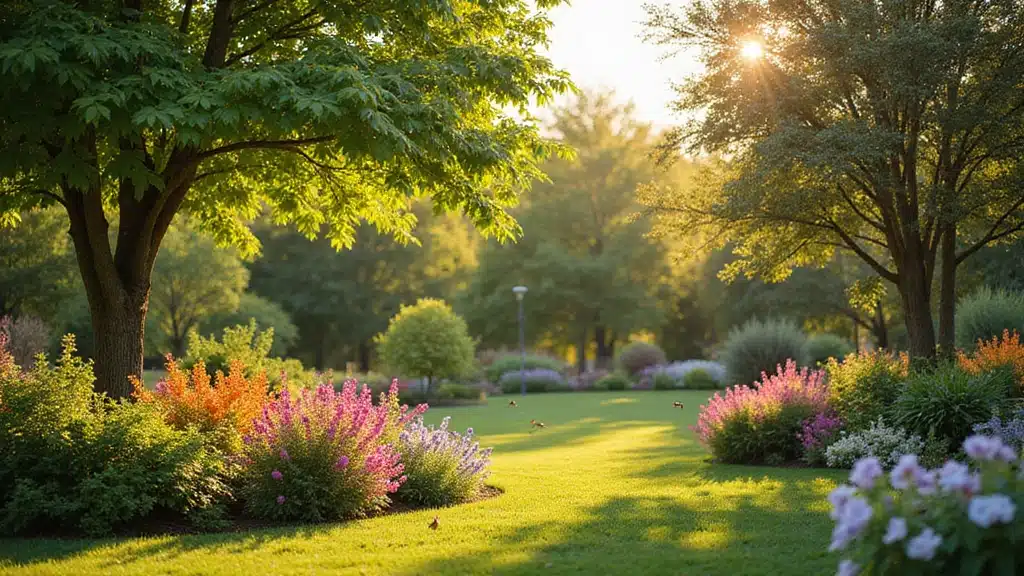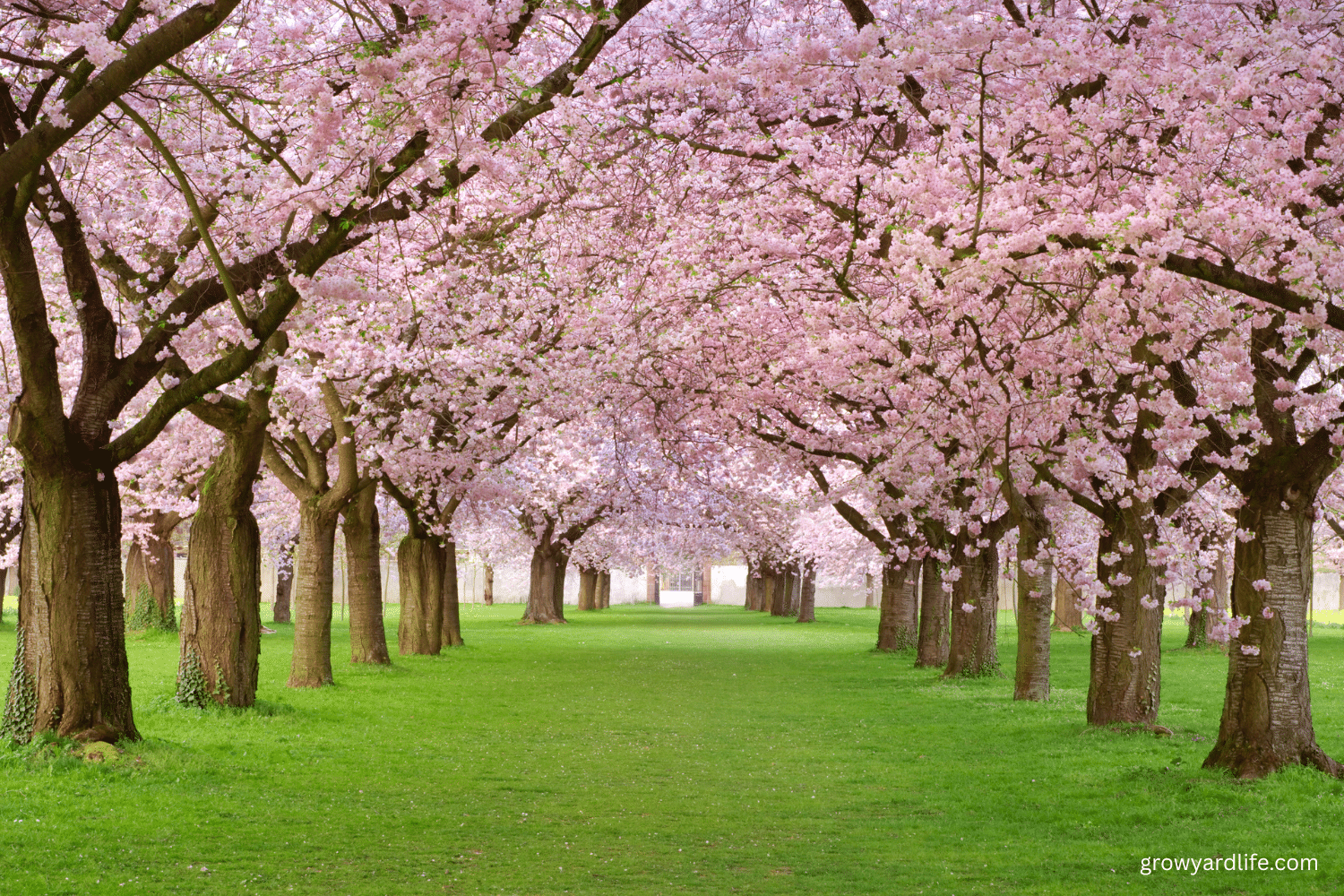11 Beautiful Flowering Trees That Stay Small and Stunning!

If you’re looking to add some color and charm to your garden, flowering trees are a fantastic choice.
These lovely plants bring beauty and vibrance to any outdoor space, and the best part is that many of them stay compact, making them perfect for smaller yards or urban gardens.
In this article, we will explore 11 stunning flowering trees that not only provide breathtaking blooms but also fit comfortably in limited spaces. Get ready to transform your garden into a vibrant oasis with these compact beauties!
1. Dwarf Redbud (Cercis canadensis ‘Forest Pansy’)
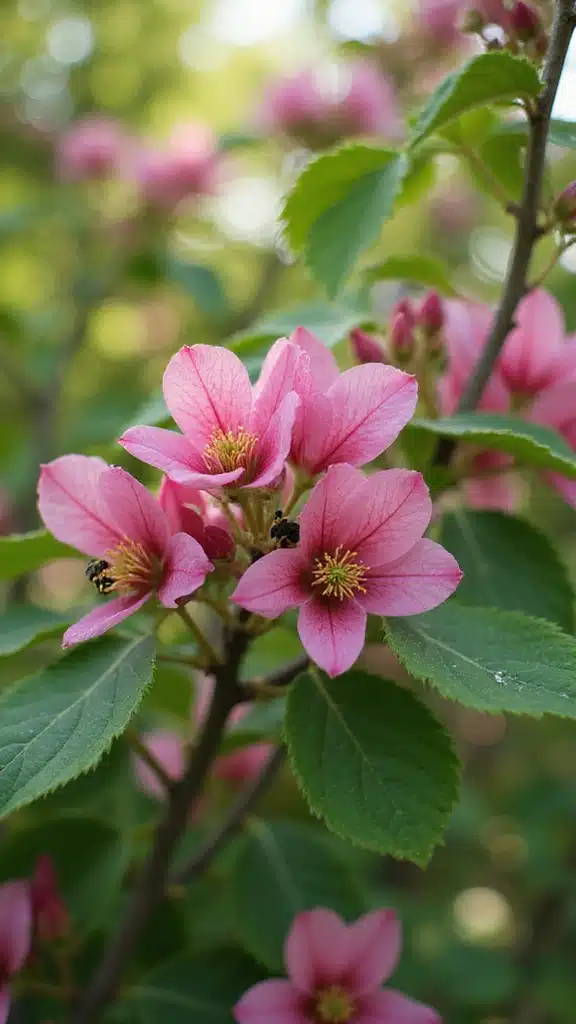
The Dwarf Redbud is a breathtaking addition to any garden, renowned for its stunning visual appeal.
This petite tree showcases heart-shaped leaves that transform into a vibrant red hue during the fall, creating a magnificent display. In early spring, it dazzles with a profusion of bright pink flowers that blanket its branches before the leaves make their appearance.
Perfectly suited for small spaces, the Dwarf Redbud typically reaches a height of about 5-6 feet, making it manageable and ideal for urban gardens. To ensure its health and vitality, consider using organic compost to enrich the soil, as it thrives in well-drained environments and flourishes in both full sun and partial shade. Regular watering and occasional pruning with pruning shears will help maintain its shape and overall health.
For an enchanting experience, plant the Dwarf Redbud near a patio or walkway, allowing you to appreciate its beauty up close. Not only does this tree enhance your garden’s aesthetics, but it also attracts pollinators, contributing to local biodiversity.
For those looking to cultivate their own Dwarf Redbud, consider purchasing Dwarf Redbud seeds. Just remember to plant it in a sunny spot for the best chance at spectacular blooms! Keep an eye out for potential issues like leaf spots and scale insects, which can sometimes affect its health.
2. Flowering Cherry (Prunus serrulata)
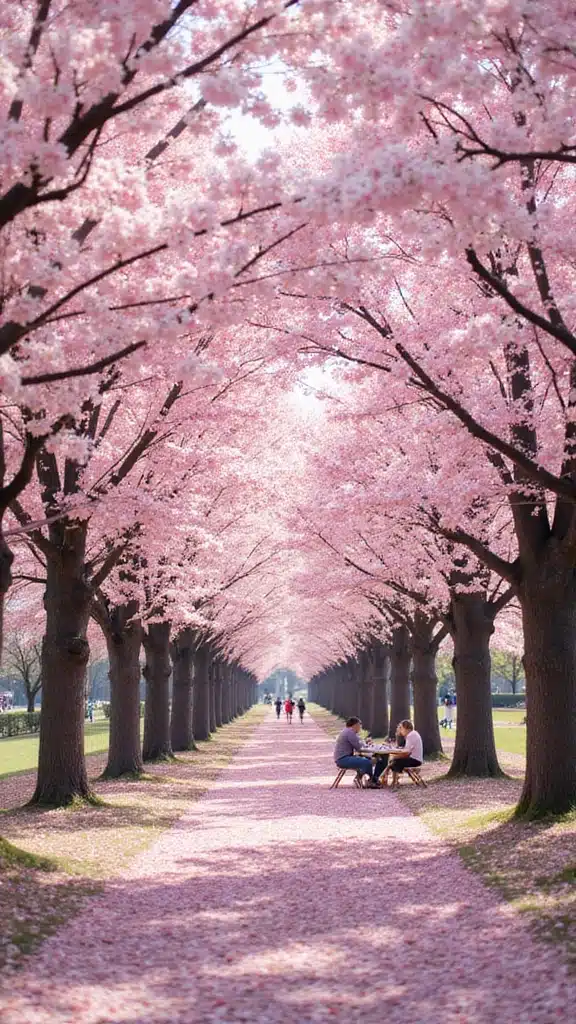
Flowering Cherry trees are renowned for their stunning springtime displays of blossoms, which can transform any garden into a picturesque landscape.
These charming trees typically grow to heights of 15-20 feet, but with proper pruning, they can be maintained at a smaller size. Their beautiful pink and white flowers attract admiration from all who encounter them, making them an excellent choice for small yards. They thrive best in full sun and well-drained soil, so consider adding garden mulch to help retain moisture and keep the roots healthy.
In addition to their lovely blooms, Flowering Cherry trees offer seasonal interest with their foliage turning a brilliant golden hue in the fall. This compact tree is perfect for lining driveways or serving as a stunning focal point in your landscape. Regular watering and the application of a slow-release fertilizer will ensure that your tree remains healthy and vibrant throughout the year.
For those looking to add a unique touch to their outdoor space, these trees can even be grown in containers, making them ideal for patios or balconies. Just remember to prune them after flowering to maintain their shape and encourage new growth. However, keep an eye out for cherry aphids and fungal diseases, which can occasionally pose challenges to their health. If you’re ready to plant, check out these Flowering Cherry tree saplings to get started on your gardening journey!
3. Snowbell Tree (Styrax japonicus)
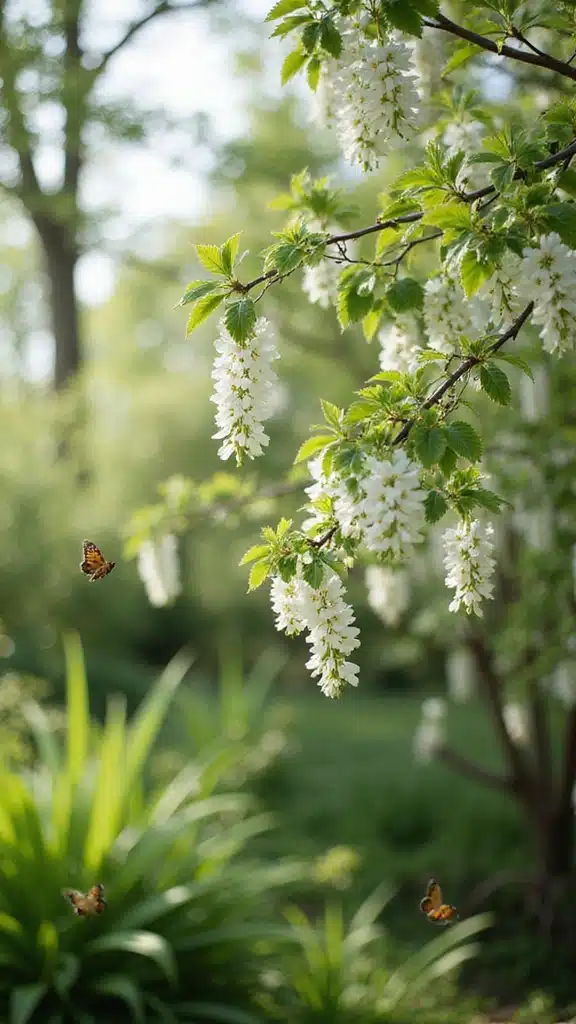
The Snowbell Tree (Styrax japonicus) is a charming addition to any garden, celebrated for its stunning, pendulous white flowers that bloom in late spring. These blossoms emit a delightful, sweet fragrance that attracts bees and butterflies, making it a lovely focal point. This compact tree typically grows to a height of 15-30 feet, but with regular pruning using a reliable pruning saw, you can easily maintain it at a smaller size.
Thriving in partial shade, the Snowbell Tree prefers moist, well-drained soil. To ensure its health and vibrant blooms, consider using organic potting soil when planting. The glossy green leaves create a stunning backdrop for the white flowers, transforming into a beautiful golden yellow in the fall, which adds to the tree’s seasonal appeal.
For those looking to cultivate their own Snowbell Tree, Snowbell Tree seeds are available to help you start this enchanting project. To fully enjoy the tree’s fragrance, consider planting it near seating areas. However, be mindful of potential spider mite infestations, which can occasionally affect the leaves.
4. Japanese Lilac Tree (Syringa reticulata)
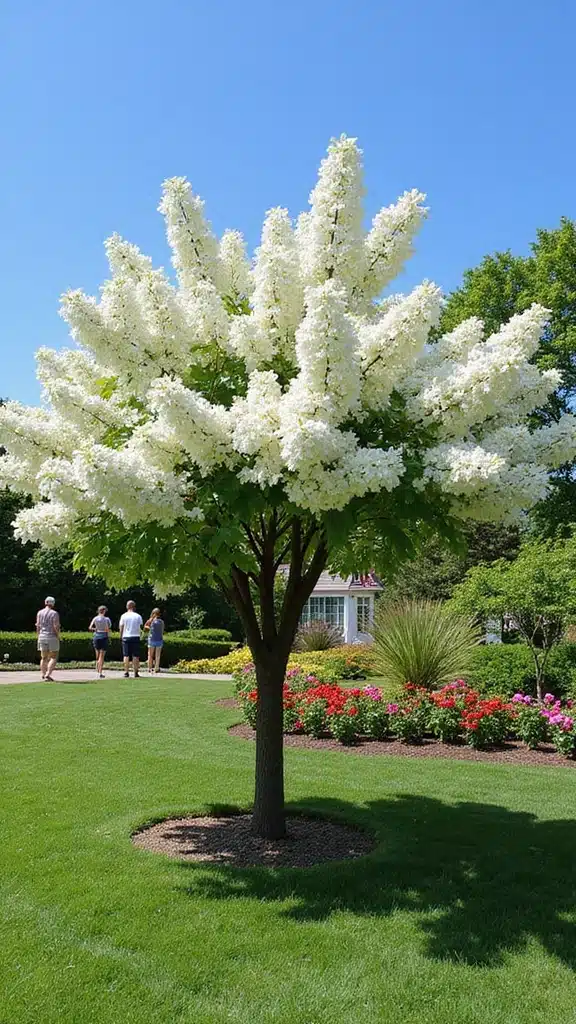
The Japanese Lilac Tree is a charming addition to any garden, and it truly deserves recognition for its beauty.
Reaching a height of around 15 to 20 feet, this small tree dazzles in the summer with clusters of fragrant white flowers that closely resemble lilacs. It’s an ideal choice for compact spaces and brings a delightful aroma to your outdoor area. For those looking to cultivate this stunning tree, consider starting with Japanese Lilac Tree seeds to ensure a lush growth.
This tree flourishes in full sunlight and demonstrates impressive adaptability to various soil conditions, making it a low-maintenance option for gardeners. To keep it thriving, be sure to maintain regular watering, especially during dry spells. A garden watering can can be an effective tool for this purpose, ensuring your tree stays hydrated and blooms beautifully.
As autumn approaches, the foliage transforms into a stunning shade of yellow, offering visual appeal that extends beyond its flowering season. For those wishing to enhance the overall impact, planting the Japanese Lilac Tree in pairs can create a more dramatic display. However, it’s essential to keep an eye out for potential issues, such as aphids and powdery mildew, which can affect the tree’s health. Additionally, using a soil moisture meter can help you monitor the soil conditions, further ensuring your tree’s health and vibrancy.
Tip: This lovely tree is perfect for planting near patios or walkways, allowing you to fully enjoy its enchanting fragrance.
5. Crabapple Tree (Malus domestica)
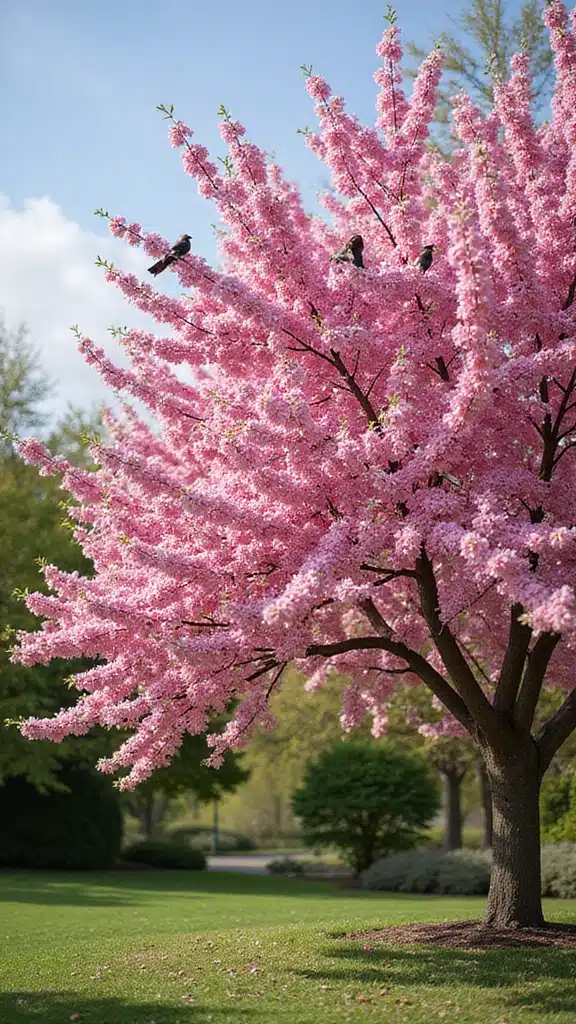
The Crabapple Tree (Malus domestica) is an excellent choice for anyone wanting to introduce vibrant blooms into their garden space.
These trees typically reach heights of 15 to 20 feet, but with proper pruning, they can be maintained at a smaller, more manageable size. In the spring, expect a stunning display of pink or white flowers that not only beautify your landscape but also attract essential pollinators. To ensure optimal growth, regular watering and fertilization are vital; consider using organic tree fertilizer during the growing season.
As fall approaches, enjoy the sight of small, colorful fruits that add charm to your garden, while also providing a feast for birds. For added visual interest in the fall, select a variety that produces vibrant fruits.
Additionally, these trees can be trained into elegant ornamental shapes, enhancing the aesthetic appeal of your garden. However, be vigilant about potential issues, such as fire blight and apple scab, which can impact the tree’s health. For protection, consider investing in pest control products to keep your tree thriving.
If you’re ready to start your gardening journey, check out Crabapple Tree saplings to bring this stunning tree into your home.
6. Golden Chain Tree (Laburnum anagyroides)
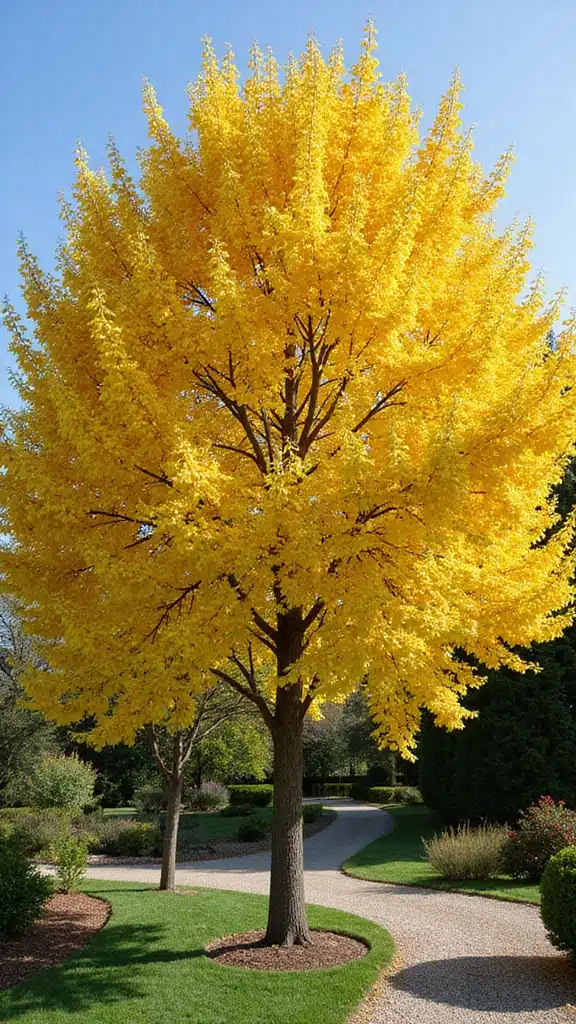
The Golden Chain Tree is truly a stunning addition to any garden, renowned for its breathtaking display of cascading clusters of vibrant yellow flowers. This small tree typically reaches heights of 15 to 25 feet and showcases its beautiful blooms in late spring, resembling golden chains that dangle gracefully and are sure to attract attention.
To cultivate this beauty successfully, it thrives in full sun and well-drained soil, making organic soil an excellent choice for planting. Regular watering is essential to keep the tree healthy, especially during dry spells. In the fall, the foliage transforms into a lovely golden hue, enhancing its appeal throughout the seasons.
For optimal enjoyment, consider planting it in a spot where it can be admired from below, such as near a patio or deck. If you’re looking to start your own Golden Chain Tree, you can find Golden Chain Tree seeds to get you started.
Additionally, adding some decorative garden stakes can enhance its elegance in your landscape. However, keep in mind that all parts of this tree are toxic if ingested, so it’s essential to plant it with care.
7. Magnolia Tree (Magnolia stellata)
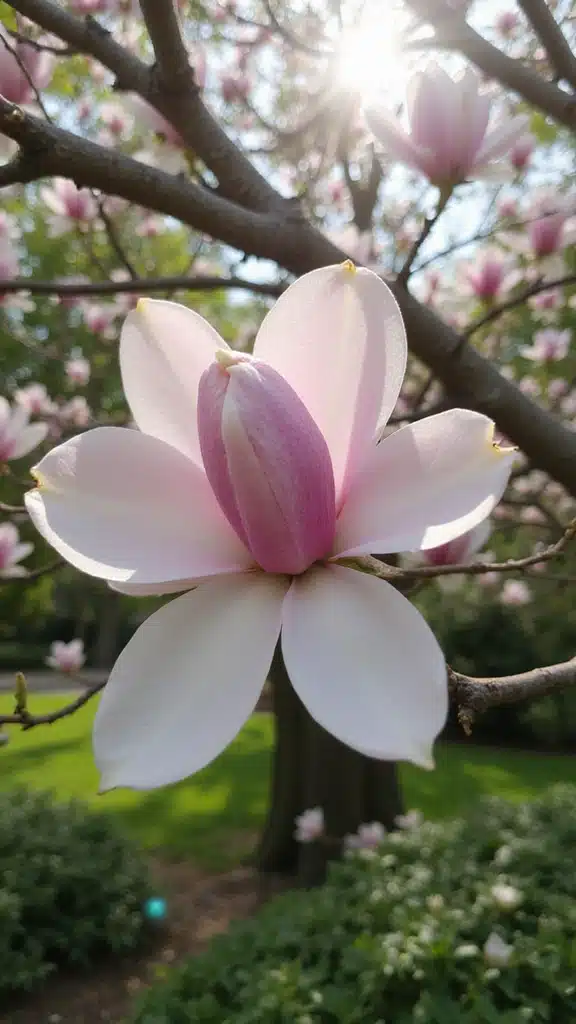
Magnolia Trees are celebrated for their breathtaking, large blooms that herald the arrival of spring. The Magnolia Stellata variety stands out as a compact choice, reaching a height of only 10-15 feet, making it an ideal addition for smaller gardens. With its star-shaped flowers that can be found in shades of white or pink, the tree not only beautifies your space but also fills the air with a delightful fragrance as it blossoms.
To ensure your Magnolia thrives, plant it in an area that receives full sun to partial shade and in well-drained, slightly acidic soil. Regular watering is essential to keep the tree healthy and ensure a vibrant display of flowers. Additionally, consider using organic mulch around the base to help retain moisture and enhance soil quality.
As the seasons change, the leaves of the Magnolia turn a beautiful shade of yellow in the fall, adding further seasonal charm. For optimal growth, it’s advisable to have pruning tools handy to maintain the tree’s shape and health.
Tip: Plant this stunning tree near your entrance to create a welcoming atmosphere with its enchanting scent.
Unique Insight: Magnolias are remarkably resilient and can adapt to a variety of growing conditions, making them a worthwhile investment. However, keep an eye out for scale insects and leaf spots, which can pose challenges to its overall health. If you’re looking to start your own Magnolia collection, consider purchasing Magnolia Tree saplings to get started on your gardening journey!
8. Weeping Cherry Tree (Prunus subhirtella)
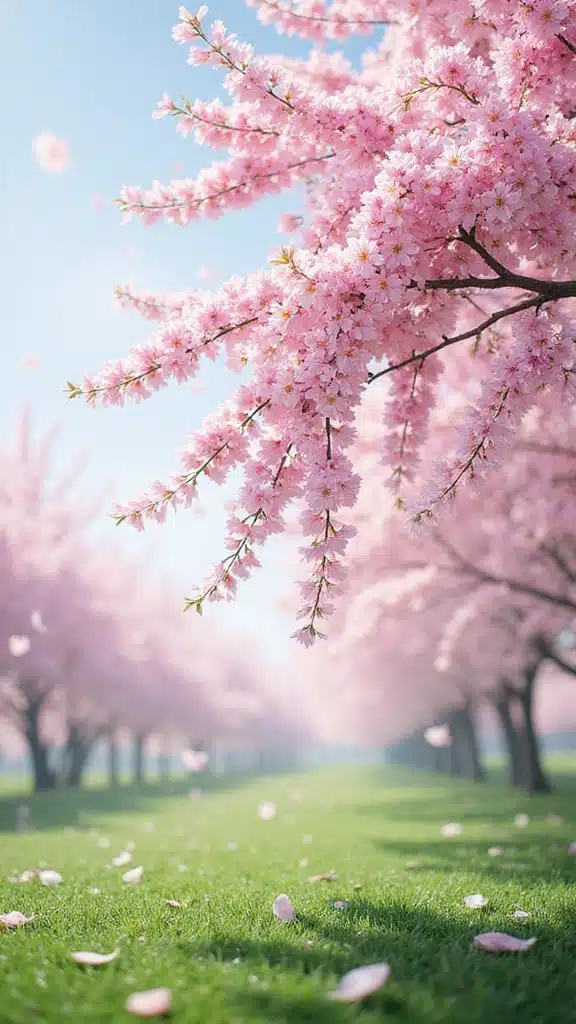
The Weeping Cherry Tree (Prunus subhirtella) is a stunning addition to any garden, particularly when it bursts into bloom. Its elegant, cascading branches create a breathtaking display, especially when adorned with vibrant pink flowers in the spring. This compact tree typically reaches a height of about 10-15 feet, making it perfect for smaller spaces.
To cultivate this beauty, consider starting with Weeping Cherry Tree seeds that you can nurture into a magnificent specimen. The tree flourishes in full sunlight and prefers well-drained soil, making it easy to care for; just remember to provide regular watering during dry spells to keep it healthy.
In autumn, the Weeping Cherry Tree offers a lovely seasonal transition with its leaves turning a warm yellow hue. To ensure its vitality and promote growth, you might want to use organic fertilizer.
Additionally, maintaining its shape and health can be easily achieved with the help of garden pruners. For the best visual impact, plant this tree in a prominent location where it can be admired as a dramatic focal point in your landscape. Just keep an eye out for potential issues like aphids and powdery mildew to ensure your Weeping Cherry Tree remains a stunning feature in your garden.
9. Crape Myrtle (Lagerstroemia indica)
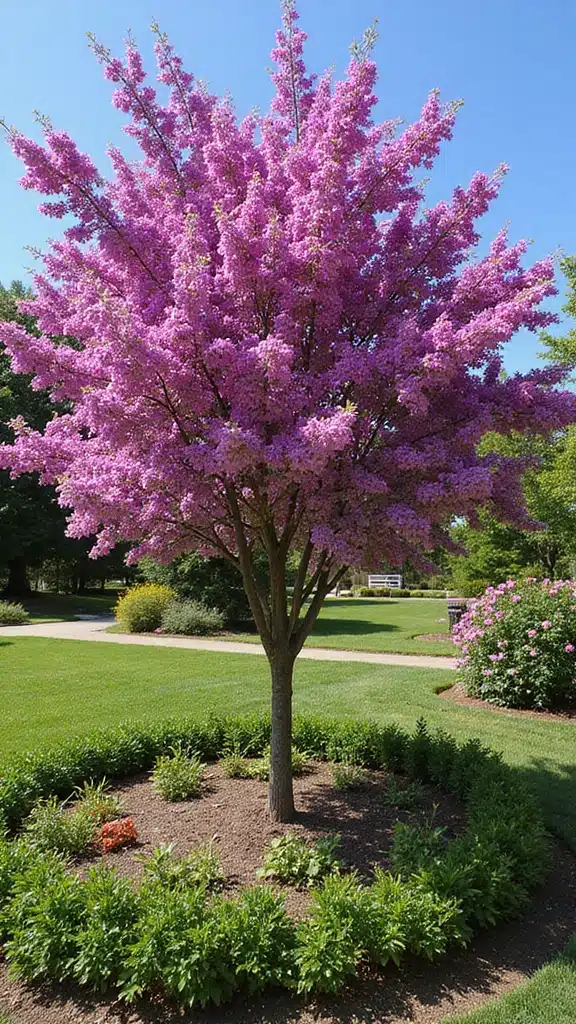
Crape Myrtle (Lagerstroemia indica) is a stunning and vibrant choice for any garden, showcasing an array of colors all summer long.
These charming trees typically reach heights of 10 to 15 feet and are celebrated for their clustered flowers that bloom in shades of pink, purple, white, and red from late spring through summer, ensuring a prolonged display of beauty. To cultivate your own Crape Myrtle, consider starting with Crape Myrtle seeds, which can easily thrive in full sun and well-drained soil.
Regular watering is key to maintaining their health and maximizing their blooms, and supplementing with organic tree food can provide the extra nutrients they need to flourish.
As autumn approaches, the leaves transform into a stunning reddish-orange, adding seasonal vibrancy to your landscape. Remember to prune your Crape Myrtles in late winter to promote new growth; a good pair of pruning shears will make this task easier and more effective.
Additionally, keep an eye out for common issues such as aphids and powdery mildew, which can occasionally impact their vitality. The unique bark of Crape Myrtles also enhances their appeal, as it peels away to reveal a smooth, attractive surface, making them a standout feature in any garden.
10. Red Maple (Acer rubrum)
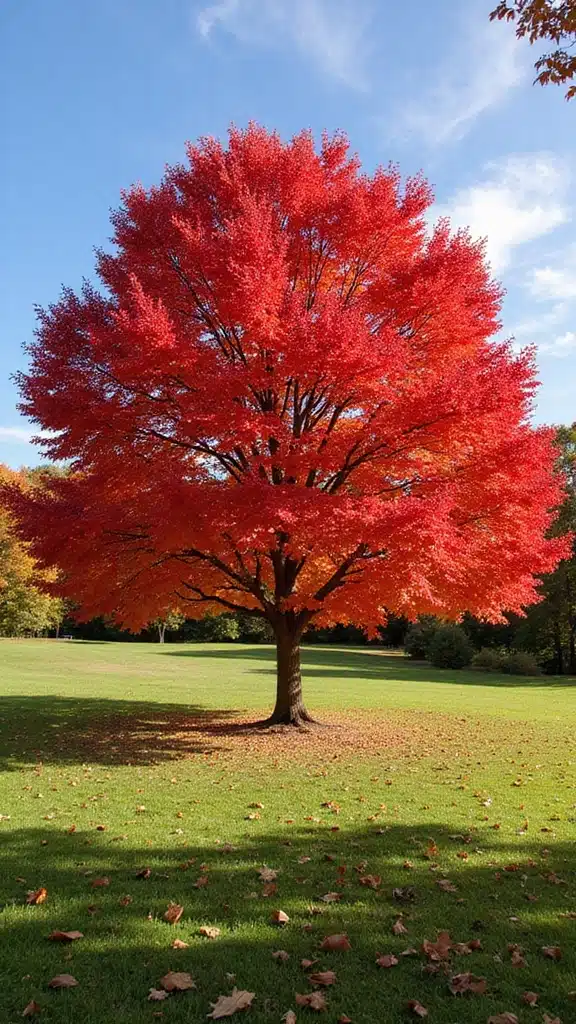
The Red Maple (Acer rubrum) is a magnificent tree that enhances your garden with vibrant colors throughout the year. While it typically grows to impressive heights, there are dwarf varieties that only reach 15-20 feet, making them perfect for compact spaces. In the spring, you’ll be delighted by its lovely red flowers, and come fall, the foliage transforms into a brilliant red spectacle.
To ensure your Red Maple thrives, it prefers full sun to partial shade and moist, well-drained soil. Regular watering is essential for maintaining its health and beauty. Consider planting it near a water source to provide added moisture. To give your sapling the best start, you might want to check out these Red Maple saplings.
Additionally, using organic mulch can help retain soil moisture and provide essential nutrients. It’s also wise to monitor your tree for common pests like aphids and scale insects, which can occasionally impact its health. To ensure your soil is optimal for growth, consider using a soil testing kit for the best results.
The adaptability of the Red Maple means it can flourish in a variety of soil conditions, making it a great choice for any garden!
11. Dogwood Tree (Cornus florida)
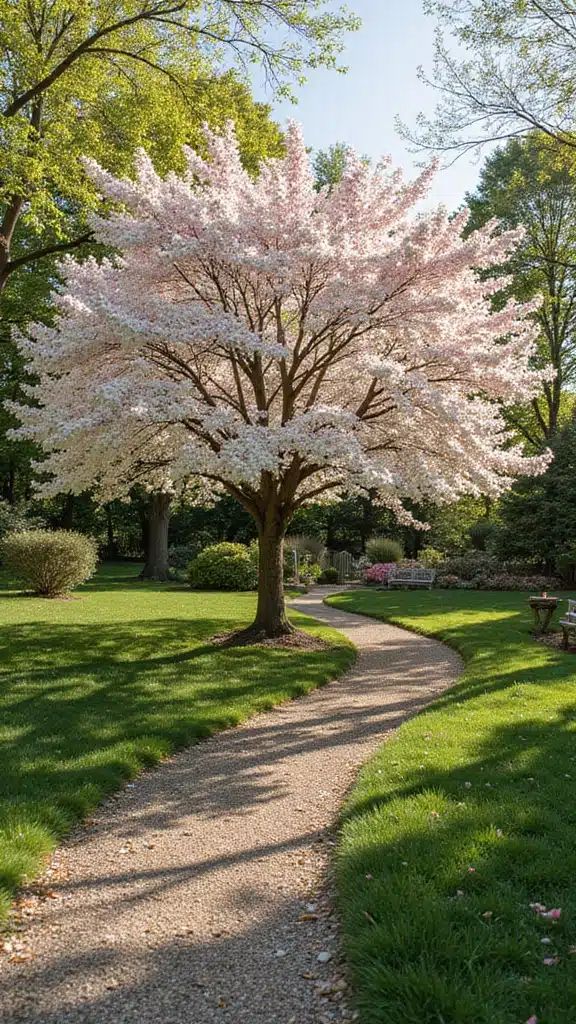
The Dogwood Tree, or Cornus florida, is a timeless addition to any garden, celebrated for its breathtaking spring blossoms. These compact trees typically reach heights of 15 to 25 feet and are adorned with striking white or pink flowers that attract a variety of pollinators. They flourish in partial shade and thrive in moist, well-drained soil, making them a perfect choice for woodland gardens. To ensure these stunning trees remain healthy and continue to bloom beautifully, consider using organic tree fertilizer to provide essential nutrients.
Regular watering is key to their vitality, and adding them near paths or seating areas allows you to appreciate their beauty up close. In the fall, their leaves transform into a vibrant red, adding seasonal charm to your landscape. Additionally, Dogwoods are notable for their unique bark texture, which offers visual interest even when not in bloom.
However, be vigilant about potential issues such as dogwood anthracnose, a fungal disease that can impact their health. To protect your trees, consider incorporating insect control products into your care routine. If you’re looking to start your Dogwood journey, check out Dogwood tree saplings to add these beautiful trees to your garden.
Conclusion
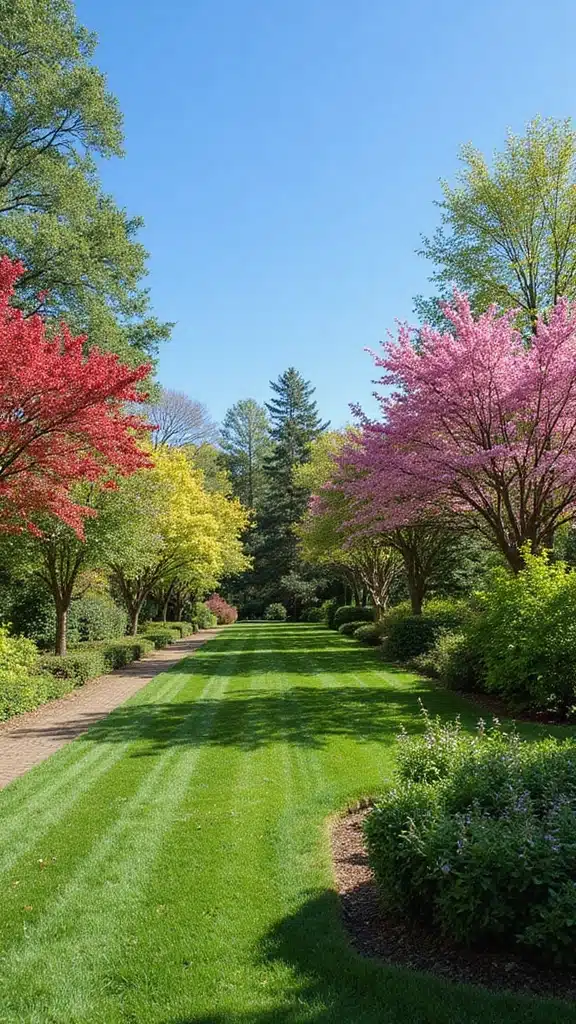
Incorporating small flowering trees into your garden can dramatically enhance its beauty and charm.
From the vibrant blooms of the Dwarf Redbud to the cascading flowers of the Golden Chain Tree, there is a perfect option for every space.
These stunning trees not only beautify your landscape but also attract pollinators and provide seasonal interest throughout the year. Consider adding one or more of these compact flowering trees to your garden for a stunning transformation!
Note: We aim to provide accurate product links, but some may occasionally expire or become unavailable. If this happens, please search directly on Amazon for the product or a suitable alternative.
This post contains Amazon affiliate links, meaning I may earn a small commission if you purchase through my links, at no extra cost to you.


